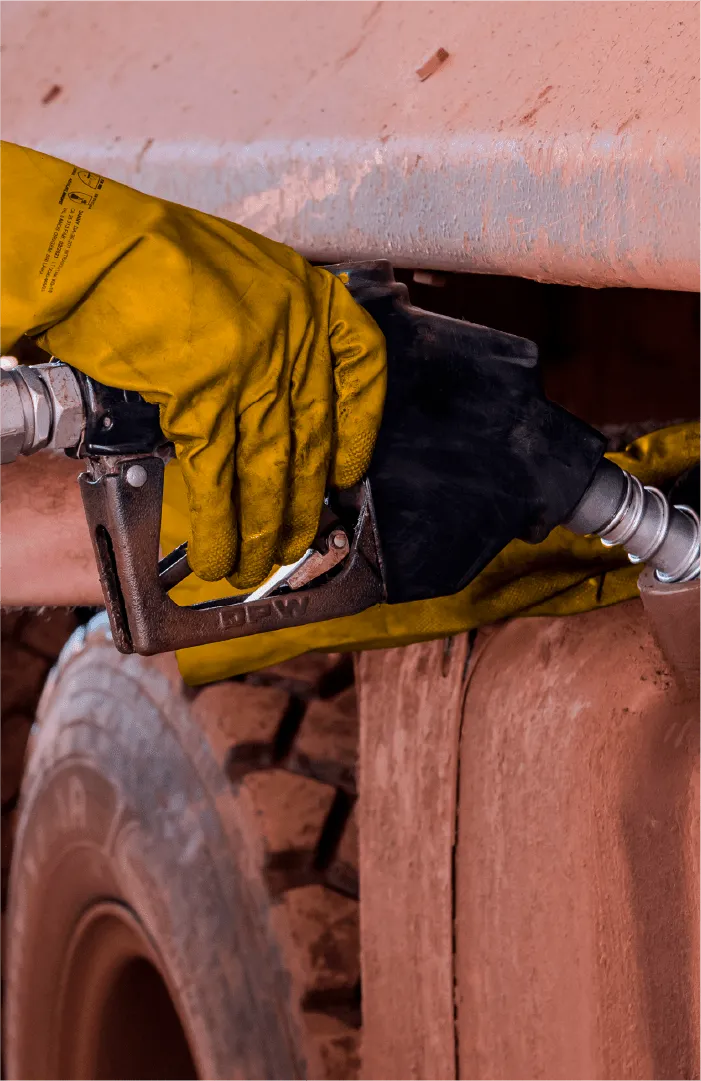We know that the mine environment is extremely dynamic, with numerous variables influenced by operating conditions, fleet capacity and operator proficiency, in addition to situations such as bad weather and failures that affect the operation routine. Because of this, several improvement plans are implemented in the operational dynamics, which makes it essential to understand how the application of that improvement was really effective.
Want to see a practical example of how we can verify that the application of an improvement was effective in an operation? Follow this content!
An operation suffers with low values of physical utilization of the equipment of the transportation fleet. When looking deeper into the data, the main reason for the low utilization was verified: equipment idle due to lack of operators. The solution defined for this situation is based on hiring new operators. Besides implementing the improvement, it is necessary to define the expected goals, as well as ways to monitor the evolution and results of the actions.
EVALUATION OF THE RESULTS OBTAINED BY THE INDICATOR
In the months following the hiring of new operators, evaluations were performed on the results obtained by the indicator. In the first month, the macro results of the physical utilization indicator showed no considerable improvement. Upon further investigation, it was observed that the time lost due to lack of operators was indeed reduced. However, the physical utilization indicator was penalized by the increase in other operational losses, such as shift changes.
VERIFYING THE CORRELATION OF THE IMPLEMENTED IMPROVEMENT WITH THE INDICATOR
The results obtained in the first month allowed us to verify that the logistics of the mining company was not yet adapted to the new number of operators, generating bottlenecks mainly at the mine gate and in the transportation of operators to the equipment. In the following months, after the logistics of the operators were solved, the results achieved were satisfactory, and an increase in physical utilization was verified. However, it is necessary to recognize whether the values are in fact due to the implemented improvement. To this end, individual evaluations were performed to correlate each of the operational stop codes with the physical utilization indicator.
The correlation was done through the determination coefficient, R², which is a practical and intuitive measure of how well the model fits a set of observations and allows measuring the relationship between variables, trying to understand how one variable behaves in a scenario where another is varying.
CALCULATING THE COEFFICIENT OF DETERMINATION R²
Its calculation can be done manually using the square of the correlation coefficient (r), through the formula below:

In which:
n = number of data provided;
x = independent variable (in this case, the values of the indicator Machine Utilization);
y = dependent variable (in this case, the values of the variable Operator Shortage).
In Excel, this statistical method can easily be added to a scatter plot that allows a better visualization of the variables’ behavior.
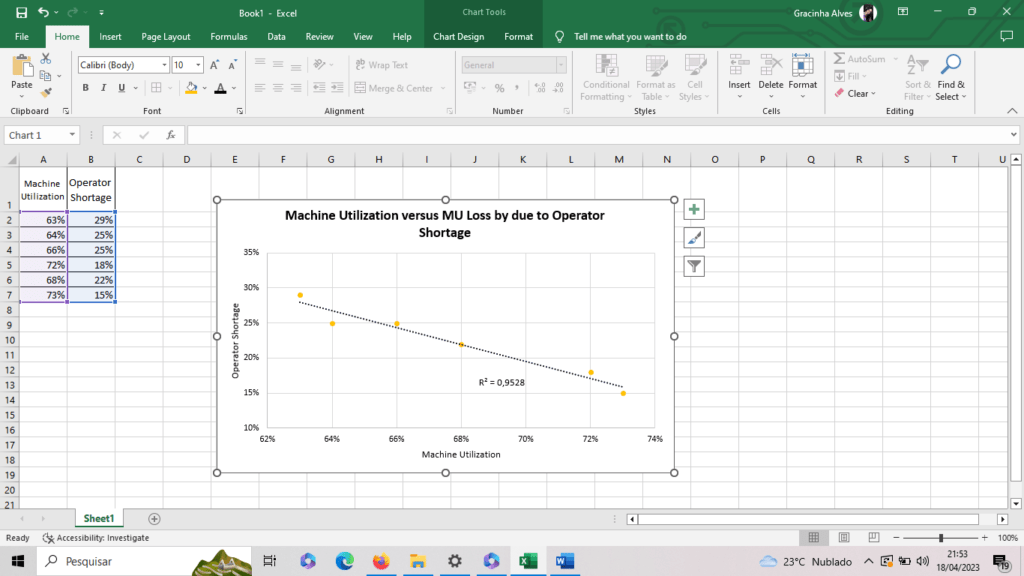
To do this you first need to add a trend line to your scatter plot:
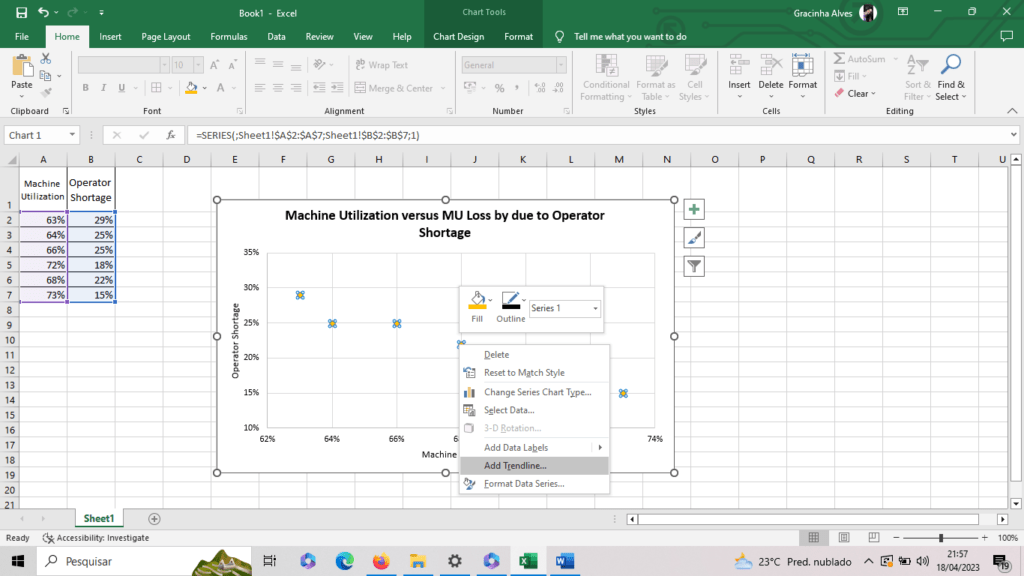
After this, choose display R-squared value in the graphic:
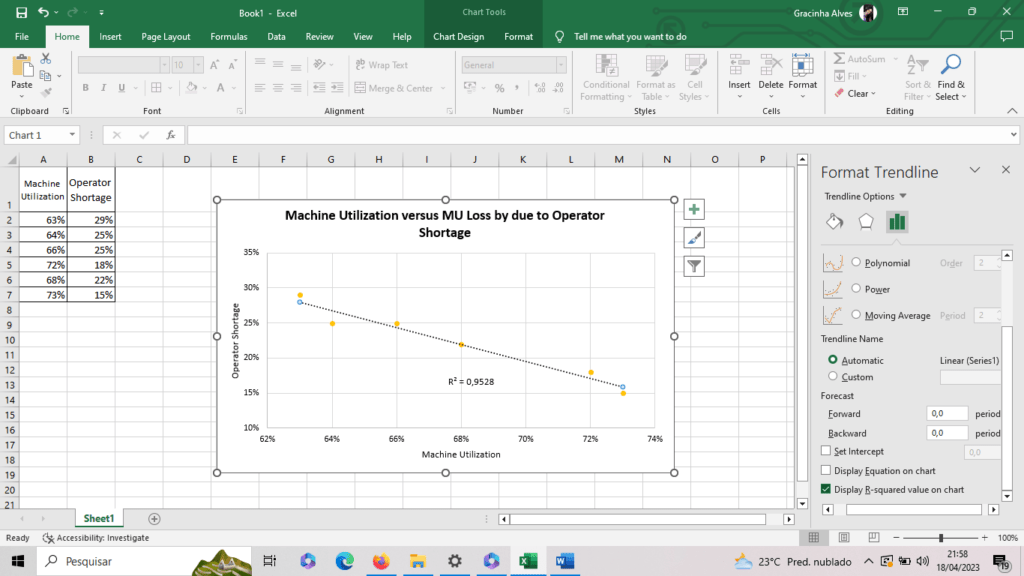
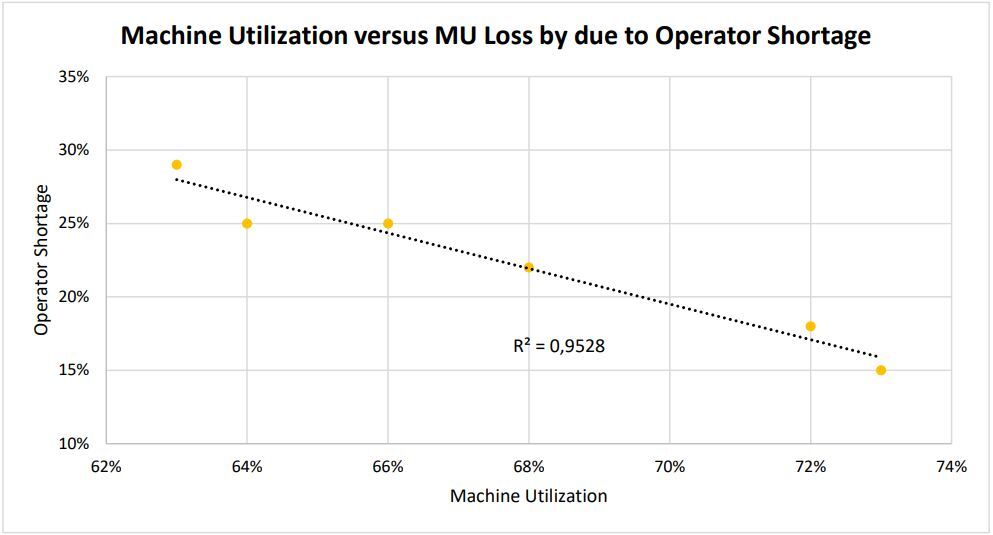
Values obtained of R² close to 1 represent a good correlation. Thus, when correlating the indicator values with the improvement, it was observed that a clear reduction of the loss due to lack of operator and its direct impact on the increase of physical utilization.
Did you like this content? Share it in your social networks!

